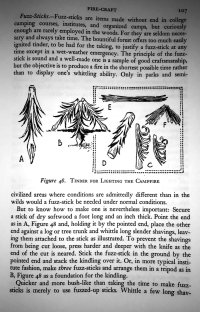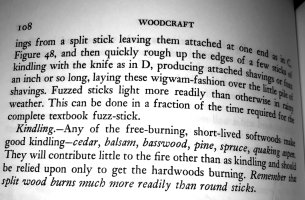Not sure that you would need fewer sticks with thicker shavings. The thickest shaving is no shaving, and one unshaven stick isn’t going to work as well as a dozen reduced to wood-wool
 @Broch
@Broch said it well. Too many thin curls burn too fast. Big flare and all the heat has gone before having a chance to raise the temperature of the next stage.
If thick shavings can be made, they take fewer passes, are easier to stack and burn slower.
It is hard to get thick curls from harder wood. Ideally so much of the stick is turned to curls that the curls ignite the remaining stick. In harder wood with fine shavings the tendency is to curl a smaller percentage of the total stick. More passes with the knife take longer and every pass there is a risk of cutting off earlier shavings.
While there are some good videos on YouTube showing beautiful feather sticks, I like the Mors videos, including “How to light a fire in adverse conditions”. Less pretty, more practical, including showing that even Mors could struggle with some wood…solution…find a different stick
 Mors Featherstick
Adverse conditions
Mors Featherstick
Adverse conditions





